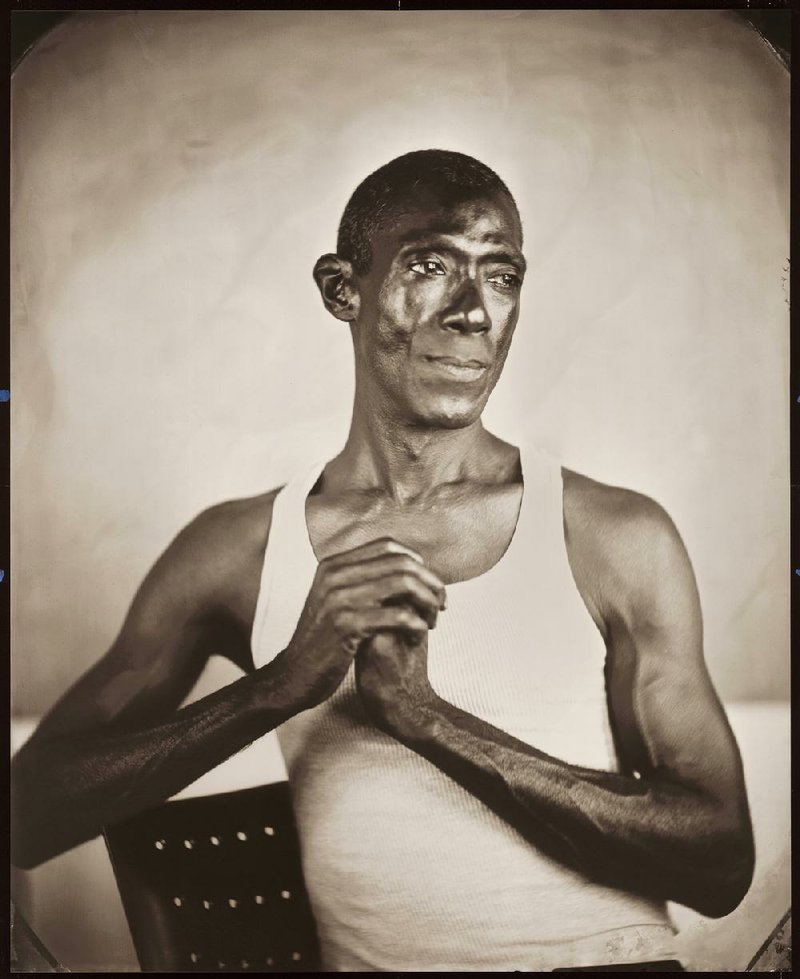WASHINGTON - When the National Portrait Gallery staged a nationwide competition, it received entries utilizing 21st-century technology - the latest high-definition videos, inkjet printers and digital cameras - as well as old-fashioned pastels and paints.
But an entry from Russellville captivated the judges because it used 19th-century techniques to capture a modern American.
Keliy Anderson-Staley, 35, who taught photography at Arkansas Tech University, entered a black-and-white tintype portrait, using a method that was popular during the Civil War.
Out of 3,300 entries, only 48 artists were selected for the Outwin Boochever Portrait Competition 2013. Most were from big cities and big states. Only four were from the South. Anderson-Staley was the only Arkansas applicant included.
The entire jury panel was impressed by Anderson-Staley’s work, according to Dorothy Moss, the gallery’s assistant curator of painting and sculpture and one of the judges.
“It’s just such a beautiful, sort of timeless image, in a way, that we unanimously voted it in,” Moss said.
The portrait is the work of an expert, Moss said.
“Keliy clearly has mastered the art of photography. She knows the history of photography, she studies it carefully, she thinks about it in terms of the meaning of the work she’s producing, and we could see all that.”
Anderson-Staley’s picture, along with the other winners, is on display at the National Portrait Gallery in Washington until Feb. 23.
In an age of Instagram, Anderson-Staley, 35, shoots and develops the tintype pictures herself, mixing the chemicals by hand. She pours the mixture onto a piece ofblackened aluminum, thoroughly coating it, then hurriedly places the metal sheet into an antique wooden camera and takes the picture.
The subject must hold completely still or the image will be blurred. They lean their head on a brace, which is hidden from the camera’s view and sit, unmoving, for about 30 seconds while the camera captures the scene.
There’s little time and little margin of error, Anderson-Staley said.
“As soon as I take the picture, I have to run and immediately develop it. So the whole process, from coating the plate to developing [the photo] has to take place in a few minutes before the plate dries. So it’s very labor intensive,” she said.
Tintype photography declined as photo technology advanced. As other photo systems became cheaper, simpler and easier, it nearly vanished.
“There’s not that many tintype practitioners around the country. There’s more and more [now],” Anderson-Staley said. “In the past few years there’s been a resurgence. People are teaching each other because people want to get away from the computer screen and get back to the roots of photography.”
Anderson-Staley’s winning portrait is titled “Kevin.” It’s a picture of an interior designer named Kevin Mobley whom she met and photographed in New York.
Moss, a judge, said Anderson-Staley’s entry looks like it’s from an earlier era.
“The only hint that this is a contemporary portrait is the chair that you see in the background. It’s a modern chair,” she said.
The size of the portrait - nearly 4 feet high and 3 feet wide - is atypical.
“A tintype is small. You could hold it in the palm of your hand,” Moss said. “This one’s larger than life but [a 19-century tintype] was meant to be a small image that was very intimate, that could be held or possessed by the viewer.”
Anderson-Staley’s original image was 8 inches by 10inches.
The portrait competition is triennial, so the next contest won’t begin until 2015, Moss said. Art aficionados can see all of the finalists by visiting portraitcompetition.si.edu.
Between now and Saturday afternoon, viewers can download an app from the website and vote for their favorite portrait.
Anderson-Staley said she’s taken pictures in Arkansas that would be good candidates for next time. But her next entry will have an out-of-state postmark. The artist moved from Russellville to Texas in August and is now teaching photography at the University of Houston.
Arkansas, Pages 9 on 09/20/2013
